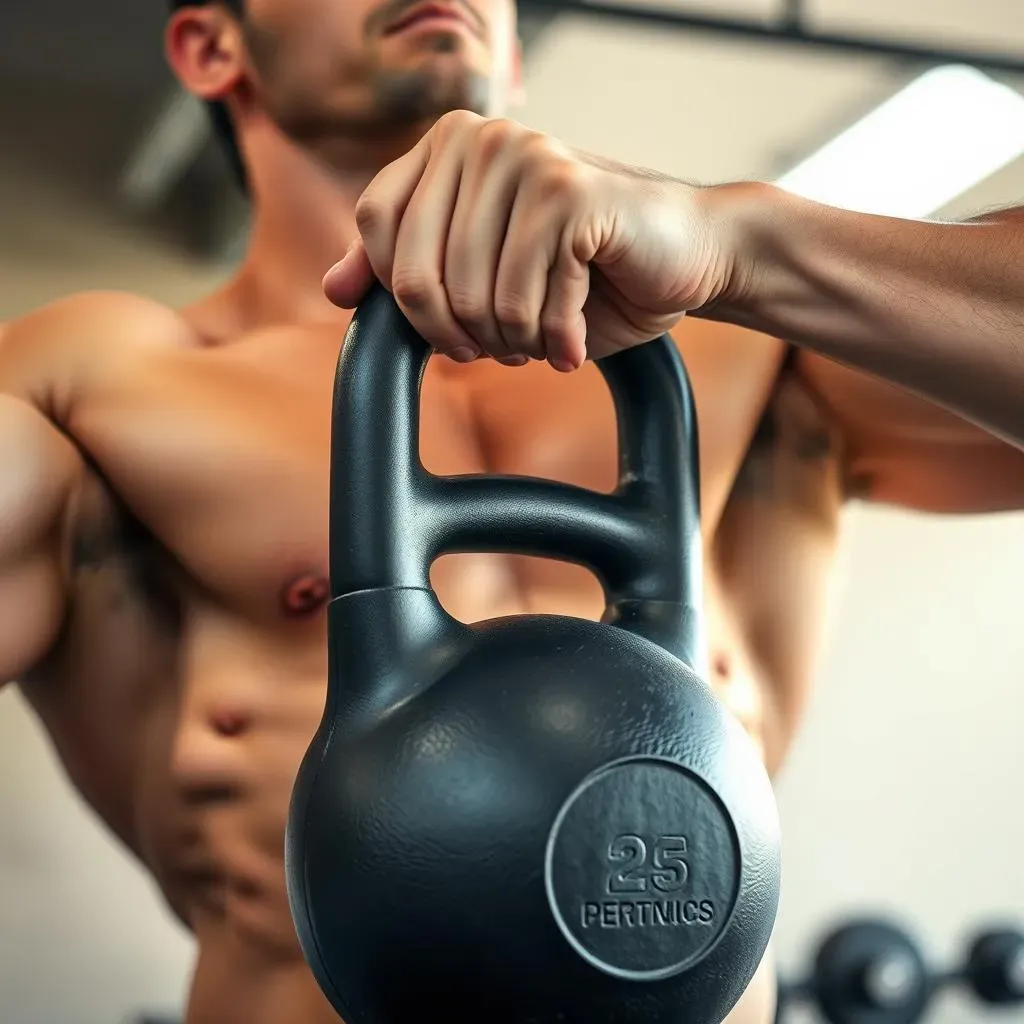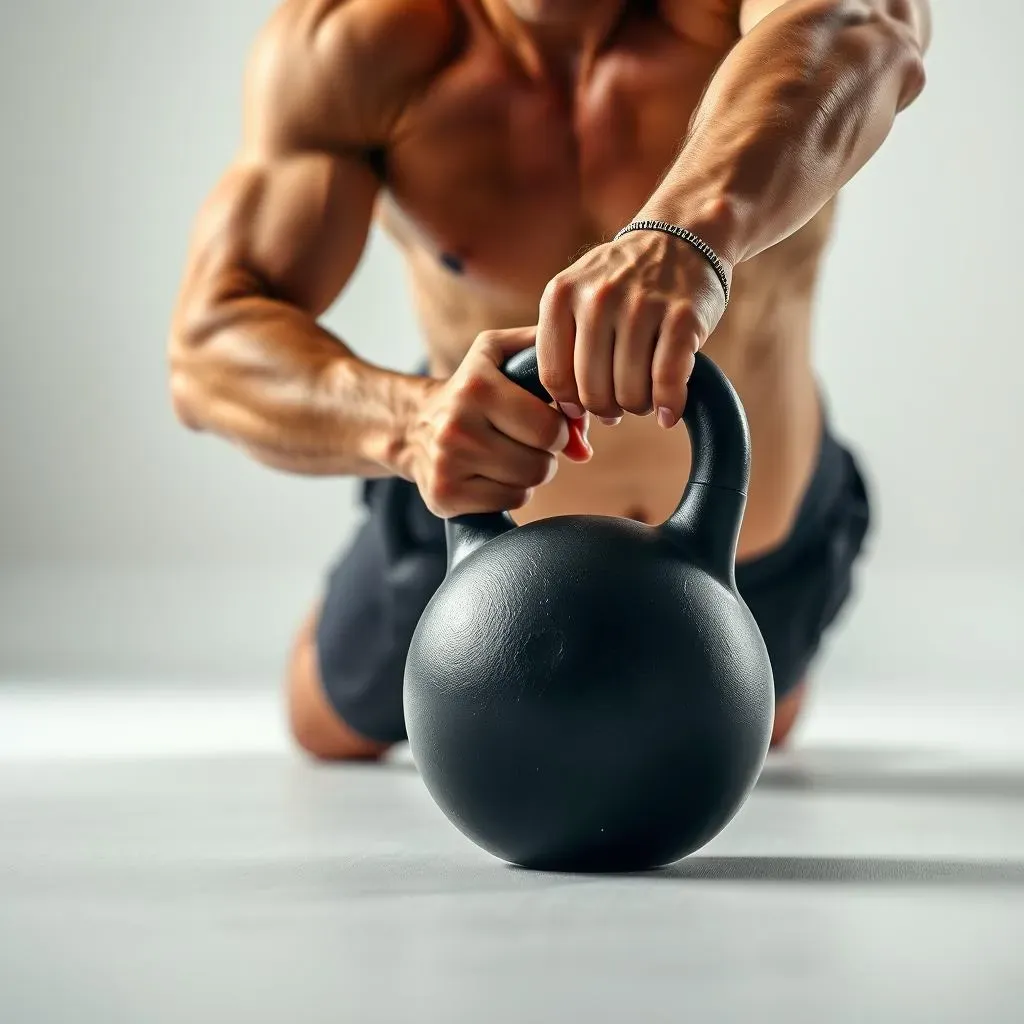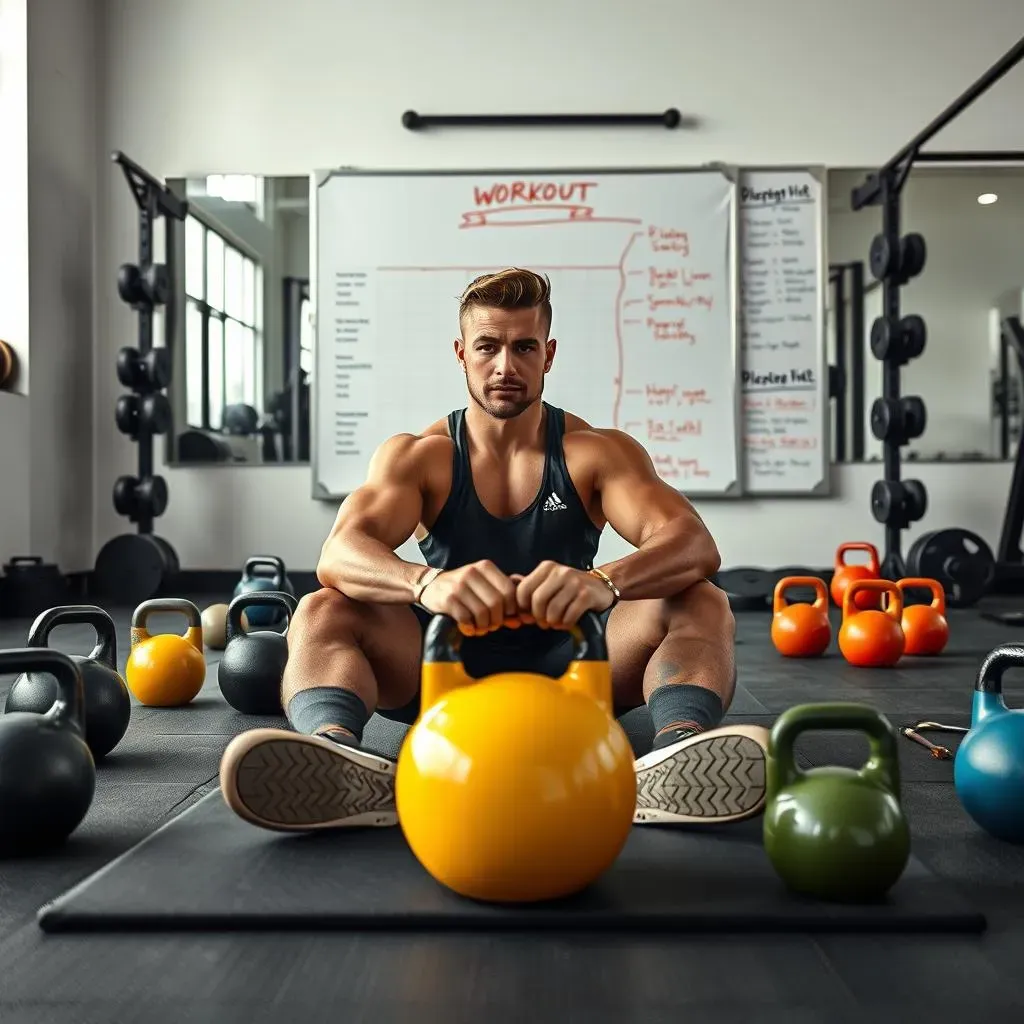Table of Contents
Ever looked at those kettlebells and wondered if they could actually build a solid chest? You're not alone. Many think kettlebells are just for swings and squats, but they're secretly awesome for chest development too. This article is your guide to unlocking the power of kettlebells for a killer chest workout. We'll break down the anatomy of your chest muscles, so you understand what you're working, and then we'll jump into 12 effective kettlebell exercises. From presses to flyes, we'll cover it all. Finally, we'll put it together with sample routines to help you build strength and size. Ready to ditch the bench and try something new? Let's get into this kettlebells chest workout and show you how to make your pecs pop.
Understanding Your Chest Muscles and Kettlebells

Understanding Your Chest Muscles and Kettlebells
The Pecs: More Than Just Show Muscles
Let's talk about your chest, or "pecs" as they're often called. You've got two main muscles there: the pectoralis major, which is the big one you see, and the pectoralis minor, which sits underneath. The major is responsible for moving your arms across your body, rotating them inwards, and pushing them forward. Think about hugging someone or doing a push-up – that's your pec major doing its thing. The minor helps with shoulder movement and stability. So, when we're talking about a kettlebell chest workout, we're really aiming to hit these muscles from different angles to get a full and powerful chest.
It's like having two engines in your chest, and each one needs to be tuned up properly. You can't just do one exercise and expect everything to grow. You need to work both the major and minor pecs with varied movements. That's where the kettlebell comes in, with its unique shape and weight distribution, it allows for a different style of training compared to dumbbells or barbells.
Why Kettlebells are Great for Chest
Now, why kettlebells? Well, they're not your typical chest-building tool, but that's what makes them so effective. The offset center of gravity in a kettlebell forces your muscles to work harder to stabilize the weight, which means you're not just working your chest, you're engaging your core and shoulders too. This is great for overall strength and stability. Plus, kettlebells allow for a more natural range of motion, which can help with joint health and prevent injuries. You also don't need a ton of space or equipment to get a great kettlebell chest workout, making it perfect for home workouts. It's like having a gym in one small, portable ball of iron. How cool is that?
Muscle | Function | Kettlebell Benefit |
|---|---|---|
Pectoralis Major | Arm adduction, internal rotation, forward push | Engages through pressing and fly movements |
Pectoralis Minor | Shoulder movement and stability | Stabilizes the shoulder joint during exercises |
Movement Patterns and Muscle Activation
When we're using kettlebells for chest, we're mainly looking at two key movement patterns: pressing and flyes. Pressing movements, like a floor press or decline press, directly target the chest muscles by pushing the weight away from your body. Fly movements, on the other hand, involve moving the weight in an arc, stretching the chest and forcing it to contract when you bring the weight back in. These two movements combined give you a full chest workout. The beauty of kettlebells is that they allow you to perform these movements with a unique challenge, engaging more muscles and giving you a more functional style of training. Think of it like sculpting your chest with a very effective tool, rather than just lifting weights for the sake of it. It's not just about lifting weight, it's about moving it with control and purpose.
“The human body is the best picture of the human soul.” - Ludwig Wittgenstein
12 Kettlebell Exercises for a Powerful Chest Workout

12 Kettlebell Exercises for a Powerful Chest Workout
Floor Press
let's get into the good stuff – the exercises! First up, we've got the floor press. This is like a bench press, but you're on the floor. Grab a kettlebell in one hand, lie on your back, and bend your knee on the same side as the kettlebell. Start with the kettlebell at your chest, then press it straight up towards the ceiling. Keep your elbow tucked in a bit and try to avoid letting it flare out too much. Lower it slowly back down to your chest, and repeat. It’s a great way to build strength without a bench. The floor gives you extra stability, which is helpful when you are starting out. It's like a solid foundation for your chest workout.
Think of it this way, you're not just lifting the weight, you are controlling it. Focus on the squeeze at the top of the press and the slow, controlled descent. This will maximize the time your muscles are under tension, which is key for growth. You can do this with one kettlebell at a time (unilateral), or use two kettlebells if you want to challenge yourself. Remember to switch sides. Try to keep a consistent pace. Don't rush it, feel the muscle working.
Seesaw Press
Next, we have the seesaw press. This move is like the floor press, but you're using two kettlebells, and you're alternating the presses. Start in the same position as the floor press, but now with a kettlebell in each hand. Press one weight up while the other stays at your chest. Then lower the first weight and press the other one up. It's like a seesaw, hence the name. This exercise forces each side of your chest to work independently, which can help with any imbalances you might have. Plus, it's great for your core because you need to keep your body stable as the weights move.
The seesaw press is not just about lifting two kettlebells. It's about coordination and control. Focus on keeping your core engaged and your body stable. Don't let your body rock back and forth as you alternate. Try to keep the presses smooth and controlled. Think of it as a dance between your two arms, each taking their turn. This move will not only work your chest but also improve your overall stability and coordination. Remember quality over quantity. It's better to do fewer reps with good form than to rush through it with bad form.
Exercise | Description | Benefit |
|---|---|---|
Floor Press | Pressing a kettlebell from the floor | Builds chest strength, great for beginners |
Seesaw Press | Alternating presses with two kettlebells | Improves stability and balances strength |
Crafting Your Kettlebell Chest Workout Routine

Crafting Your Kettlebell Chest Workout Routine
Putting It All Together
Alright, so you've got the exercises down, now how do you make a workout? It's not about just throwing a bunch of moves together, it's about having a plan. A good kettlebell chest workout routine should have a mix of pressing and fly movements, and you need to consider things like sets, reps, and rest time. For example, you could start with the floor press, then move to the seesaw press, and then add in some floor flyes. The key here is to listen to your body. Don't go too hard too soon. It's better to start slow and build up your strength gradually. Remember, consistency is key. It's like cooking a good meal, you need the right ingredients and you need to follow the recipe.
Think of your workout routine as a blueprint for building a stronger chest. You need to have a clear idea of what you want to achieve, and then you need to design a routine that will help you get there. This isn't just about doing random exercises. It's about strategically working your muscles to get the best results. Don't be afraid to experiment with different exercises and see what works best for you. The most important thing is to find a routine that you enjoy and that you can stick with. It's a long game, not a sprint.
Sample Routines for Different Goals
Let's talk specifics. If you're looking to build muscle (hypertrophy), you want to aim for moderate weight with higher reps, like 8-12 reps for 3-4 sets, with about 60 seconds rest between sets. If you're more focused on strength, you'll want to go heavier with fewer reps, like 3-6 reps for 3-5 sets, with longer rest periods, about 2-3 minutes. You can also mix and match; do some sets for hypertrophy and others for strength. Remember, you can adjust the weight and the reps based on your fitness level. The most important thing is to challenge yourself but not overdo it. It's a balance between pushing yourself and staying safe.
For example, a hypertrophy routine might look like this: Floor Press 3 sets of 10 reps, Seesaw Press 3 sets of 10 reps, Floor Fly 3 sets of 12 reps. A strength routine, on the other hand, could be: Floor Press 4 sets of 5 reps, Seesaw Press 4 sets of 5 reps, Decline Press 3 sets of 6 reps. These are just examples, and you can adjust them based on your specific goals and what you have available. It's like having a toolbox with different tools, you choose the ones that are best for the job. And don't forget a warm-up before you start and a cool-down when you're done. It's important to prepare your body for the workout and to help it recover afterwards.
Goal | Sets | Reps | Rest |
|---|---|---|---|
Hypertrophy (Muscle Growth) | 3-4 | 8-12 | 60 seconds |
Strength | 3-5 | 3-6 | 2-3 minutes |
Progressive Overload and Consistency
Now, here's the secret sauce: progressive overload. This is just a fancy way of saying you need to gradually increase the challenge over time to keep getting stronger. This could mean adding more weight, doing more reps, or adding more sets. You can also change the exercise, or increase the time under tension. It’s important to track your progress. For example, if you can do 3 sets of 10 reps with a 20kg kettlebell easily, try increasing to 22kg, or do 11 or 12 reps. This principle is key for continuous growth, and it applies to any type of exercise. It's like climbing a ladder, you need to keep taking steps up to reach the top.
Also, don't forget about consistency. It's better to do a few workouts per week consistently than to do one long workout once a month. Your body needs time to adapt and recover. Aim for at least two to three kettlebell chest workouts per week, and make sure you're getting enough sleep and eating a healthy diet. It's not just about what you do in the gym, it's about what you do outside of it too. Remember, building a strong chest takes time and effort, but with a good plan, consistency, and a bit of patience, you'll get there. It’s a journey, not a destination. Enjoy the process.
"The only way to do great work is to love what you do." - Steve Jobs
Wrapping Up Your Kettlebell Chest Journey
So, there you have it – a full guide to using kettlebells for a chest workout that's both effective and, let's be honest, a bit more interesting than your standard bench press. We've explored the muscles, nailed the exercises, and even given you some workout plans to start with. Remember, consistency is key, and it's not just about lifting heavy. It’s about lifting right, paying attention to your body, and making sure you’re pushing yourself just enough to see progress. Now, go grab those kettlebells and get to work building that chest you've always wanted, and maybe impress some folks at the gym too.